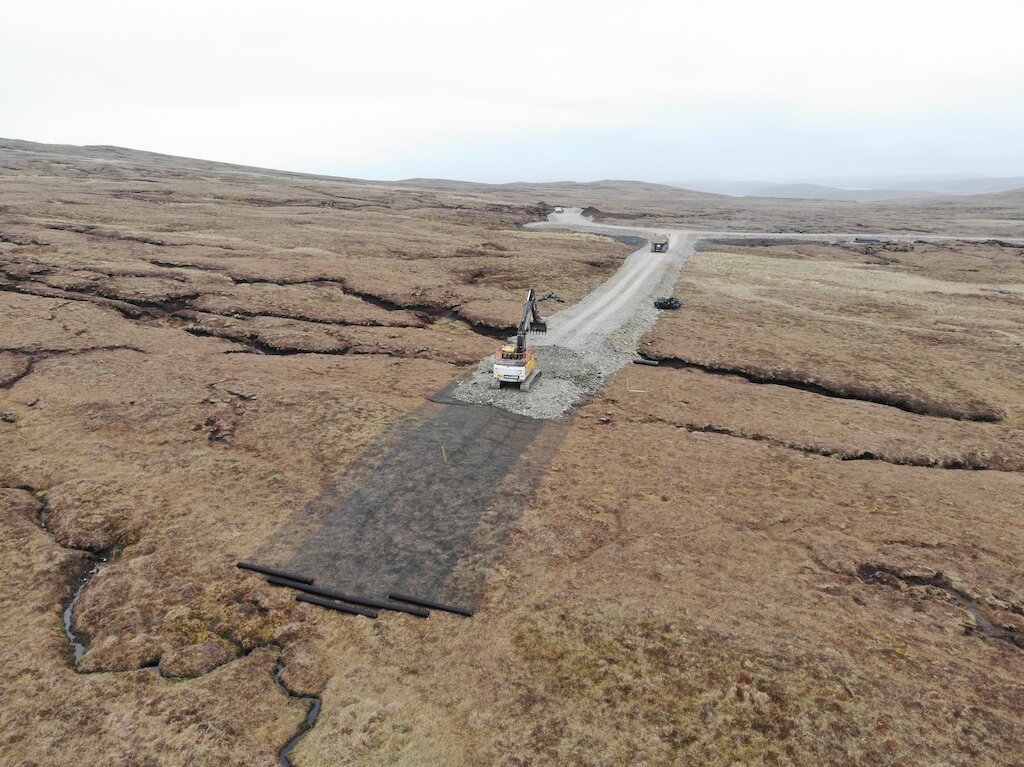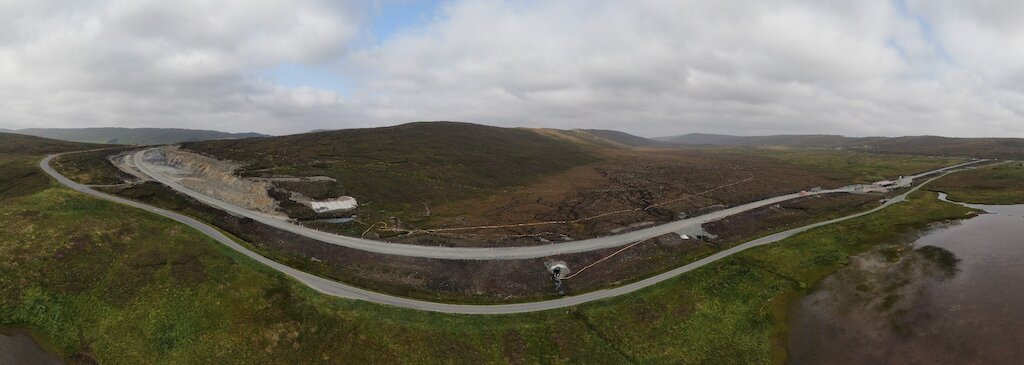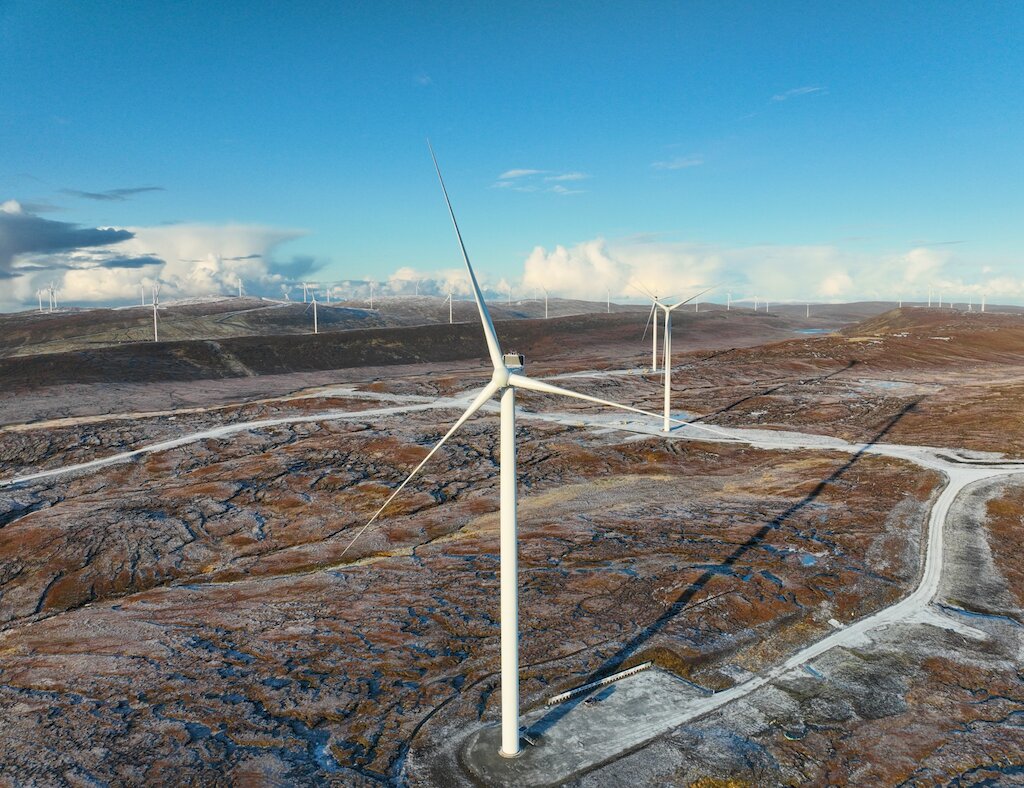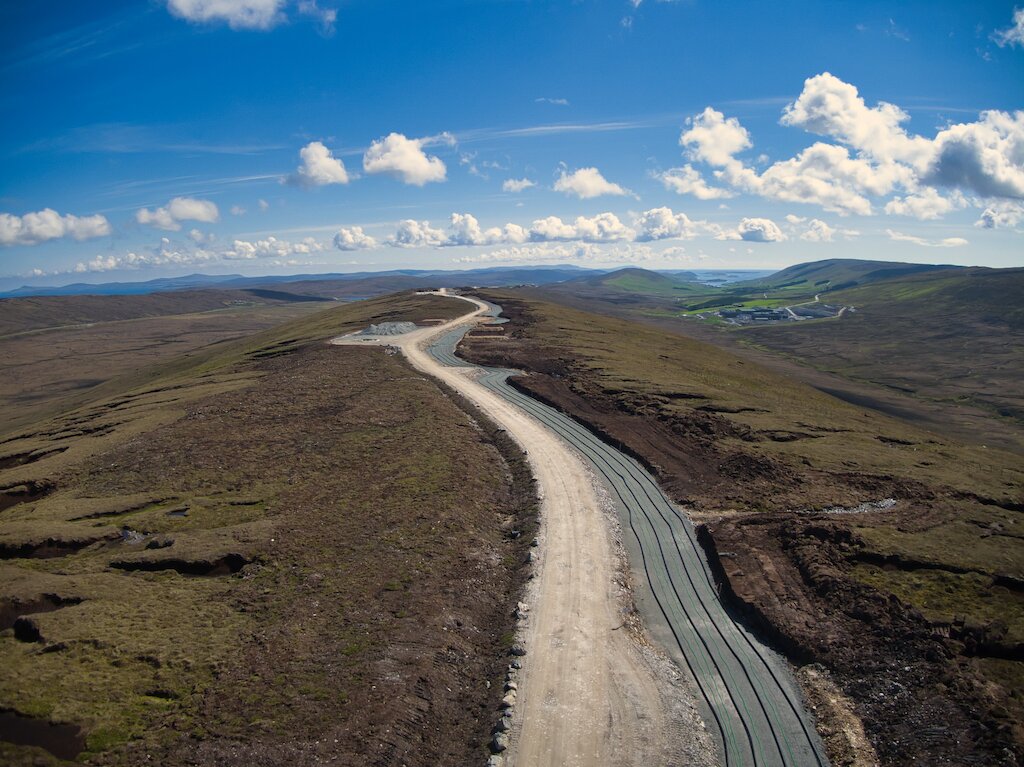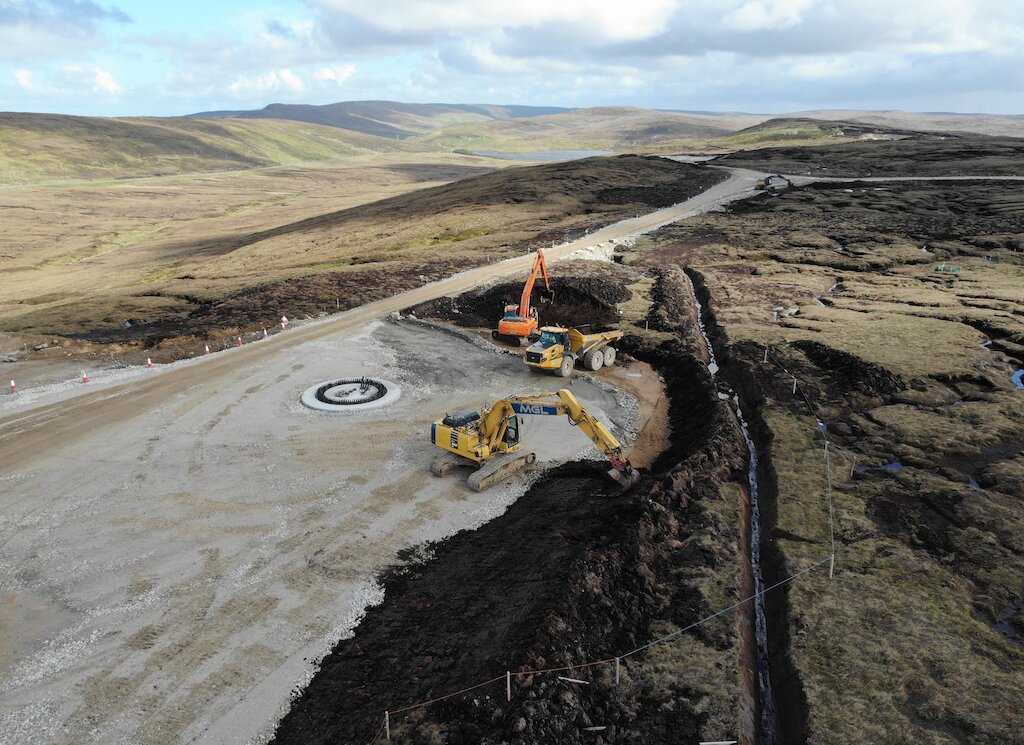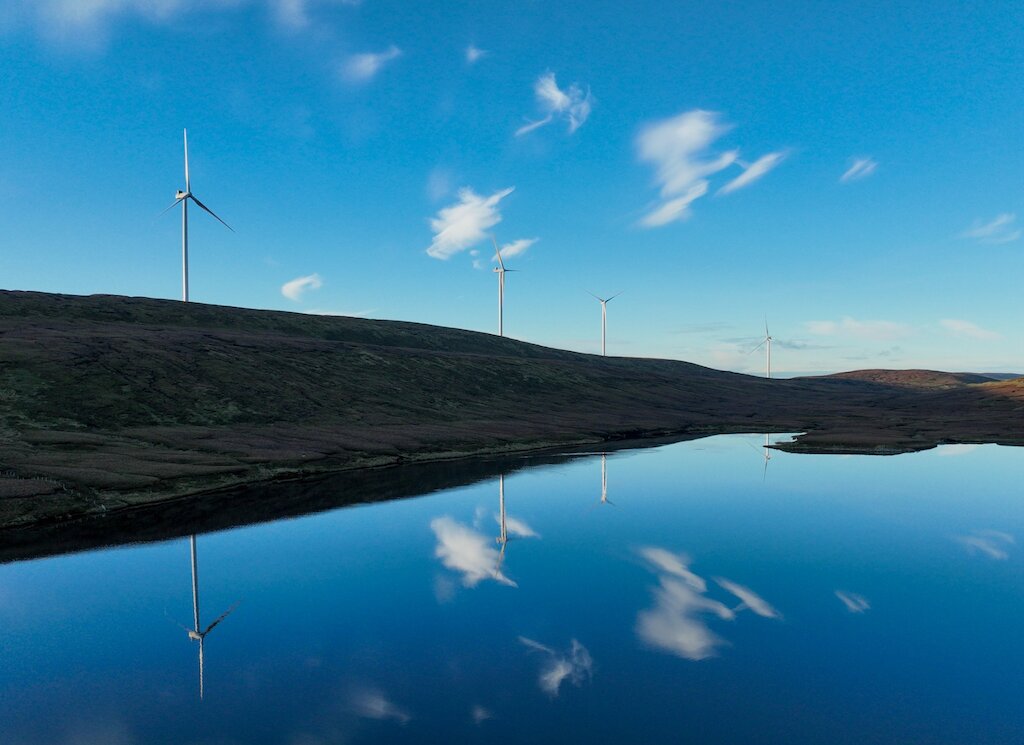Creating more than 70km of access roads
One of our first tasks on site was to begin creating the onsite road network which was not only vital for construction traffic access and movement but also, in the longer term, for providing access to Viking's operational team in the longer term.
We have installed more than 43 miles (70km) of onsite roads, access infrastructure and a number of bridges where water crossings have been required.
Much of the onsite road network has been built using the 'floating road' concept where membrane material and then aggregate is laid on top of peatland negating the need to dig out the peat itself.
The Sandwater Road
To reduce the impact of construction traffic on the existing, narrow Sandwater Road (B9075), a new construction/haulage road was built alongside it which will ultimately replace the B971 once construction is finished. The adoption of the new road will provide a wider carriageway and ultimately a smoother and safer route for members of the public.
Public access
During construction, the Viking wind farm site has been operating under CDM (Construction, Design and Management) Regulations. Members of the public have been prohibited from taking access during construction in order to avoid potentially dangerous interactions with machinery, excavations and borrow pit operations.
Once Viking is operational, the CDM regulations will be lifted and members of the public will be able to take responsible access to the wind farm which previously was inaccessible. With more than 70km of site roads in place, we anticipate cyclists, walkers and others enjoying the new roads. Unfortunately unauthorised motorised vehicles and motorcycles will not be permitted.
More information about public access will be made available towards the autumn of 2024.
Cabling
Viking now has around 478km (300 miles) of high voltage electrical cable installed (made up of sixteen 33kV circuits) which is around the same distance as making the return journey from the Grutness Ferry Terminal to the Sullom Voe Oil Terminal three times.
In addition to the electrical cables, there is also around 159km (100 miles) of fibreoptic cables connecting the wind turbines to the wind farm control systems and 97km (60 miles) of earthing cables.
These all run from each turbine to the newly built 33kV substation at Kergord.

